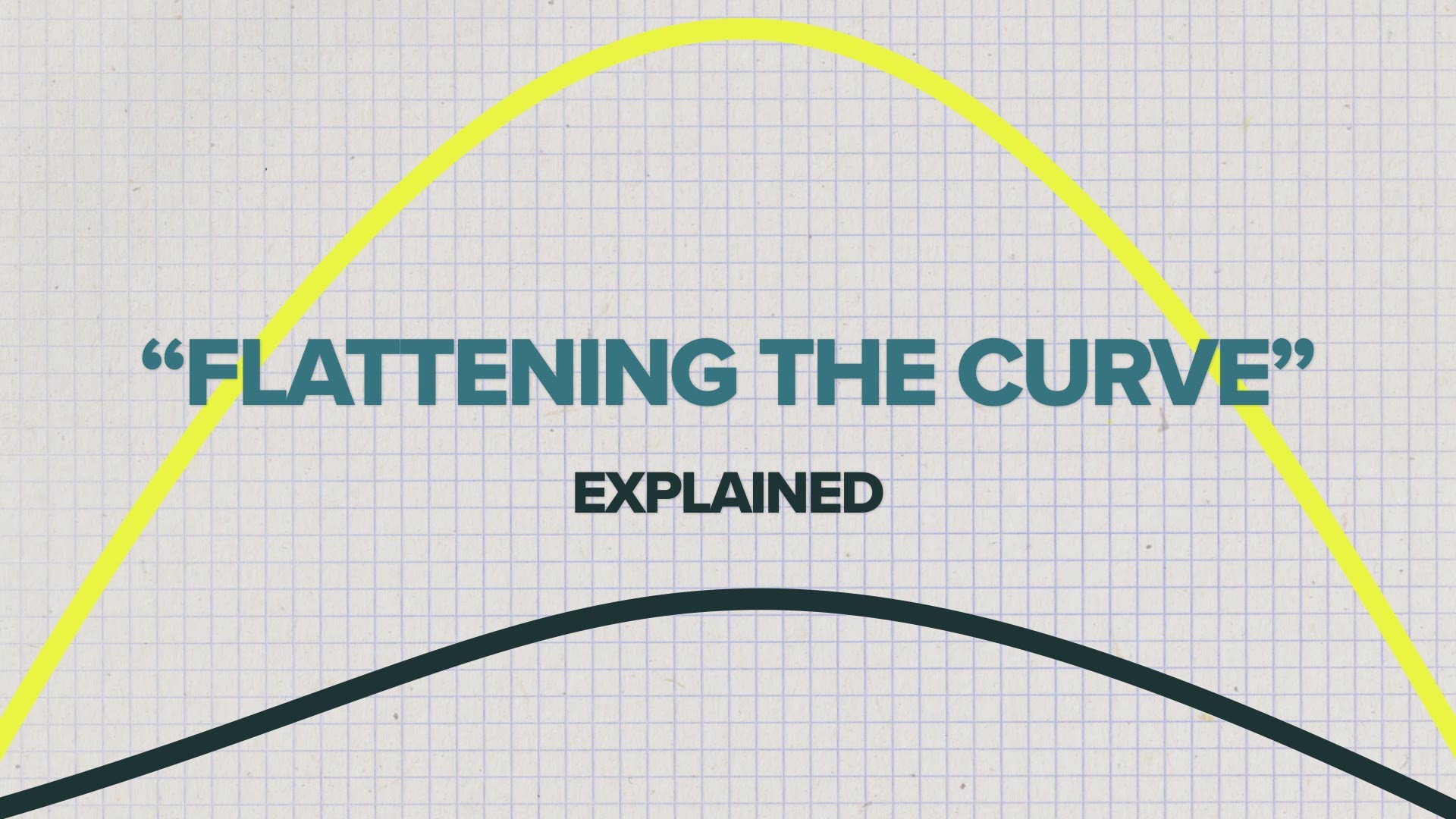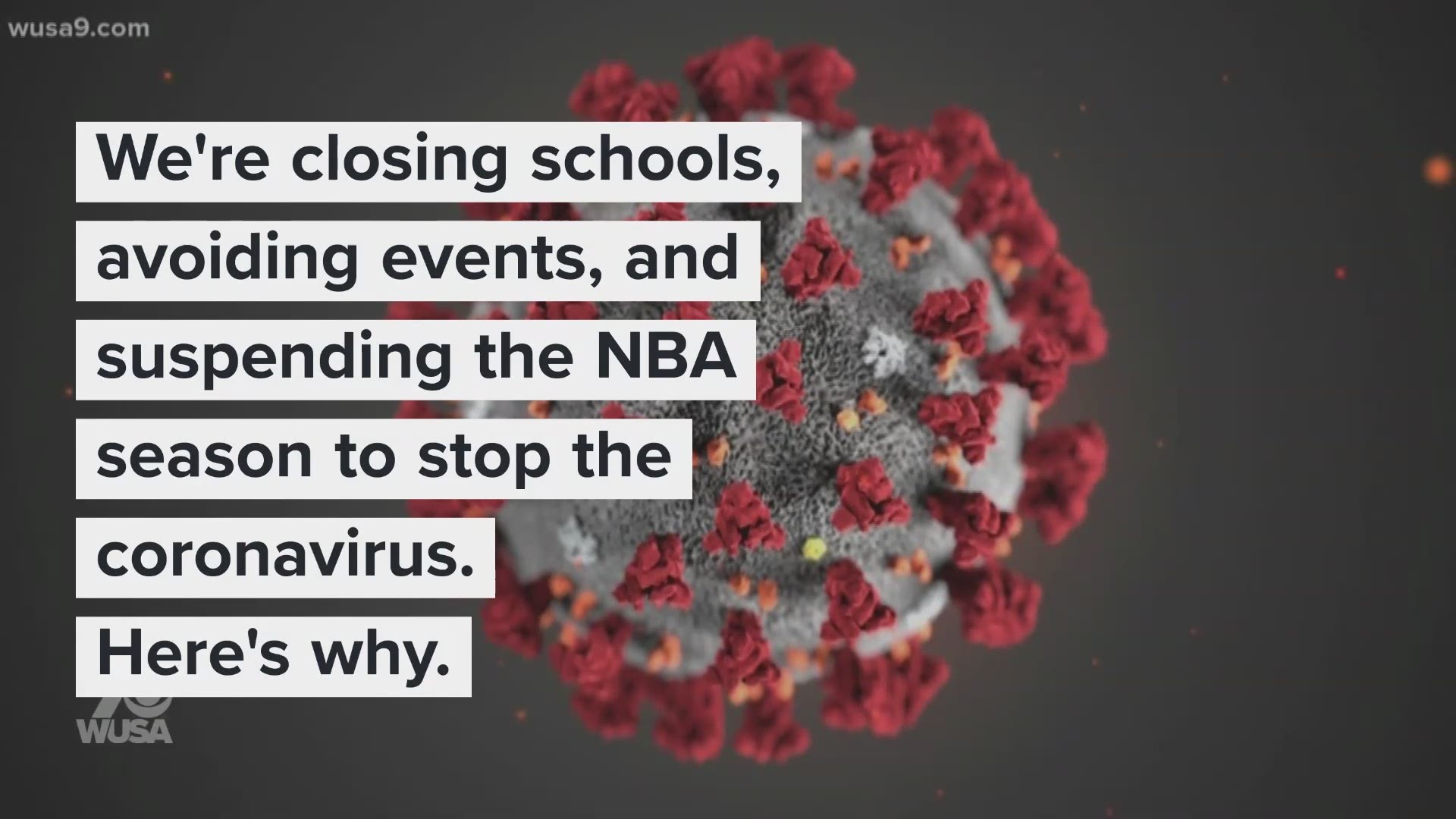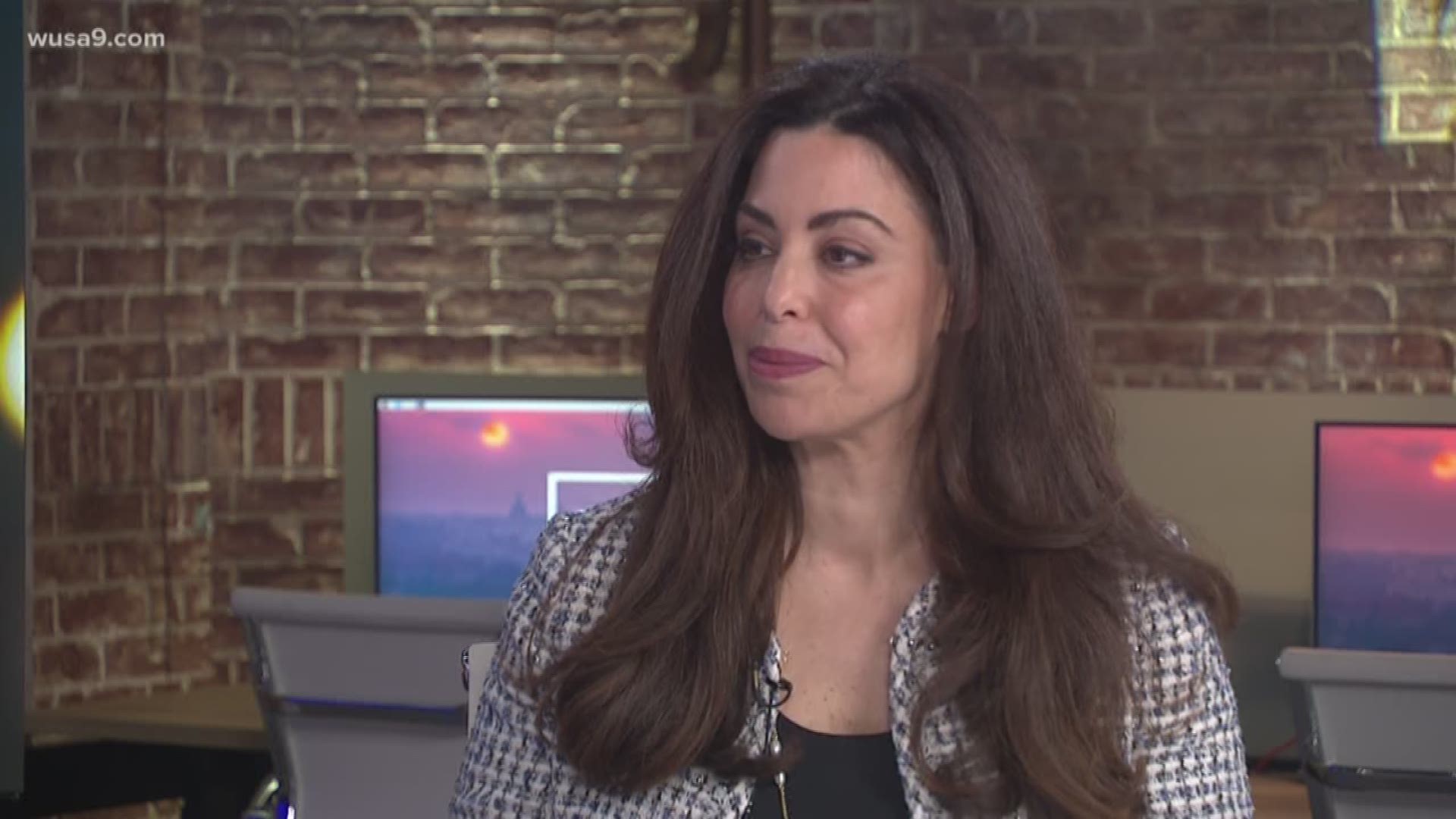WASHINGTON — On Saturday, the District of Columbia confirmed its first two cases of the coronavirus. Four days later Mayor Muriel Bowser declared the city under a state of emergency. By Thursday, the NBA and NHL had canceled their seasons, the President had banned travel to most European countries, and schools around the country were moving to online instruction, or closing entirely.
Why? All in an effort to flatten the epidemic curve. Far from being a cause for alarm, all of the closures and cancellations indicate that officials around the country are following evidence-driven methods of stopping a viral outbreak.
The epidemic curve is the term epidemiologists use to describe the lifespan of a disease outbreak. In visual terms, it looks something like this graphic from the Centers for Disease Control:

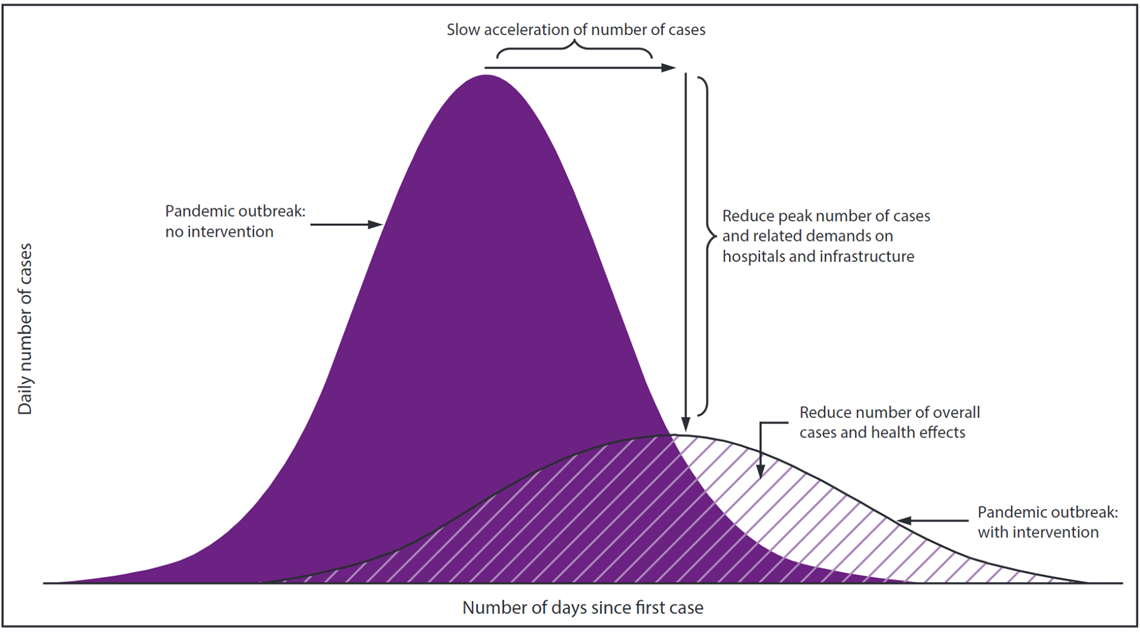
The large purple area shows how a pandemic like the COVID-19 coronavirus might spread without intervention. It starts with a small number of cases, but quickly snowballs into a huge number that can overwhelm a country’s healthcare system, before finally tapering off. It’s similar to how the seasonal flu propagates in the U.S. In fact, here’s this year’s flu season (data again from the CDC), for comparison:
Back to the first chart: The smaller curve shows how a pandemic might spread if efforts are made to discourage its spread – things like closing schools, canceling large events, and encouraging hand washing. Altogether, this is known as “flattening the curve.”
As Dr. Drew Harris, a population health lecturer at Thomas Jefferson University, said in a now-viral tweet, flattening the curve could be "the difference between finding an ICU bed & ventilator or being treated in the parking lot tent."
You might still ask, “If the outbreak is eventually going to subside on its own, why take such drastic measures to flatten the curve?” The answer is simple: Evidence shows that it works.
In a study published as part of the CDC’s current “Community Mitigation Guidelines to Prevent Pandemic Influenza,” researchers looked at efforts to stem the tide of the 2009 H1N1 swine flu pandemic. The researchers found that, in Texas, school districts that closed during the pandemic saw a “45%–72% reduction in acute respiratory illness in households with school-aged children.” The study says similar data suggested a 50% reduction in transmission among school children in Alberta, Canada.
The CDC estimates the novel strain of H1N1 that caused the 2009 pandemic resulted in roughly 61 million cases and as many as 12,500 deaths in the United States. The 2009 strain of H1N1 was able to reach pandemic levels while being more or less equally as infectious as the seasonal flu.
By comparison, COVID-19 has a basic reproduction number (also called an R0) – the number epidemiologists use to describe how easily a disease transfers from person to person – anywhere from 2-3x higher than the seasonal flu, and could have a mortality rate as much as 10x higher, according to congressional testimony from Dr. Anthony Fauci, the head of infectious diseases at the National Institutes of Health.

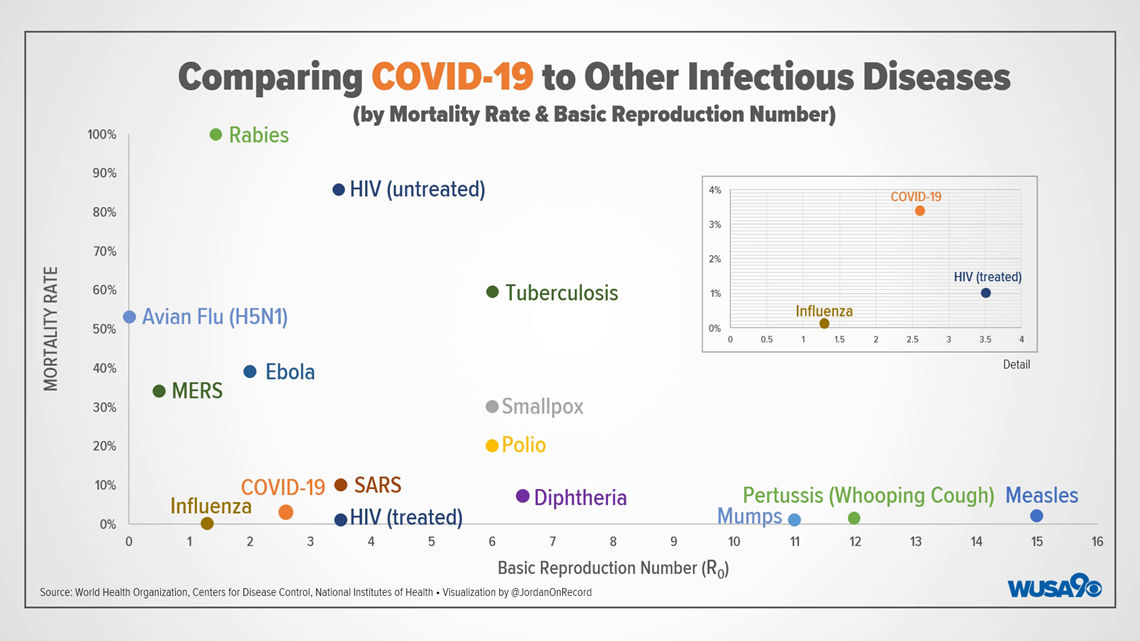
All of that is why health officials are taking the COVID-19 pandemic so seriously. Without taking efforts to flatten the curve, a coronavirus pandemic on the scale of H1N1 – or even just at seasonal flu numbers in the U.S. – would be devastating.
As of the latest CDC weekly flu report, an estimated 34 million Americans had contracted the seasonal flu this year. Those 34 million cases have resulted in 20,000 deaths. At the current estimates of its mortality rate – about 1%, according to Dr. Fauci’s testimony to Congress – 34 million cases of COVID-19 could cause as many as 340,000 deaths.

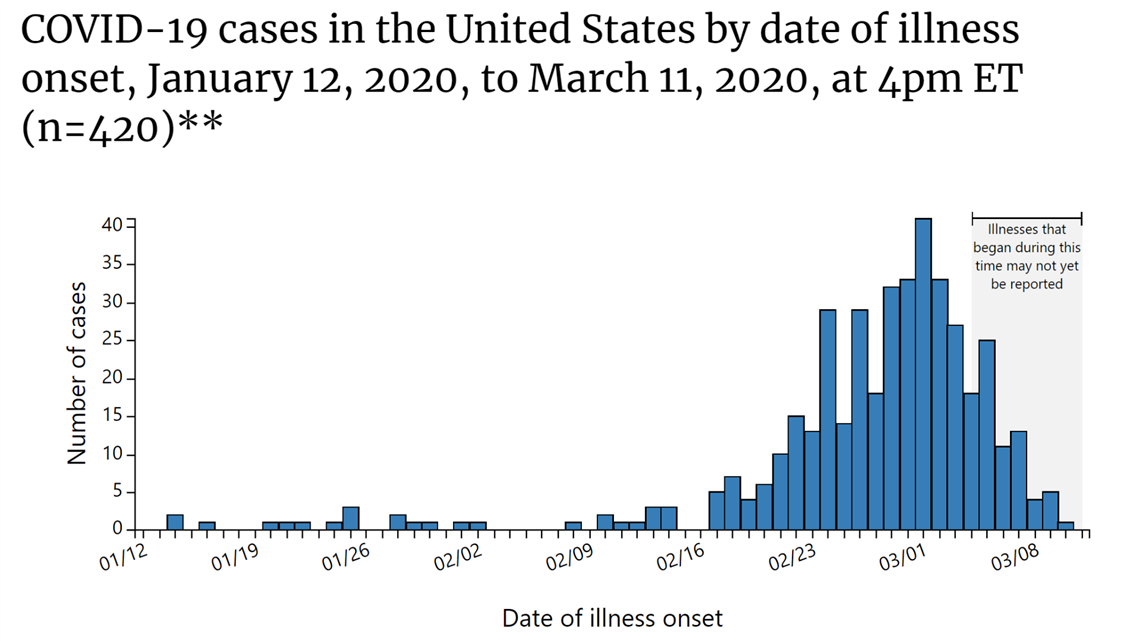
For the seasonal flu, flattening the curve means promoting as many people as possible to get the flu shot each year, along with standard advice like good hand-washing technique and not going to work sick. Since the coronavirus has no vaccine – and, currently, no treatment – officials across the country have used the tools available to them. In the DMV, that means things like closing all Maryland public schools for the next two weeks, canceling NCAA games and performances at the Kennedy Center, and closing all Smithsonian Museums and the National Zoo until further notice.
If you’d like to learn more about epidemic curves, the CDC has a 10-minute online course that teaches you how to better understand them and how to predict the mode of spread of a disease based on its epidemic curve.
MORE CORONAVIRUS COVERAGE
- All Maryland public schools to close to limit coronavirus spread
- Arlington National Cemetery, Smithsonian Museums, Kennedy Center closed over coronavirus concerns
- Disneyland closing California parks through March over coronavirus
- NCAA cancels March Madness, Frozen Four, other championships
- Worst Wall Street day since 1987 as sell-off over coronavirus deepens
- MLB suspends spring training, opening day pushed back
- VERIFY: Beware of fake CDC email alerting about potential hazards
----
Jordan Fischer is the data reporter for WUSA9. Follow him on Twitter at @JordanOnRecord.

